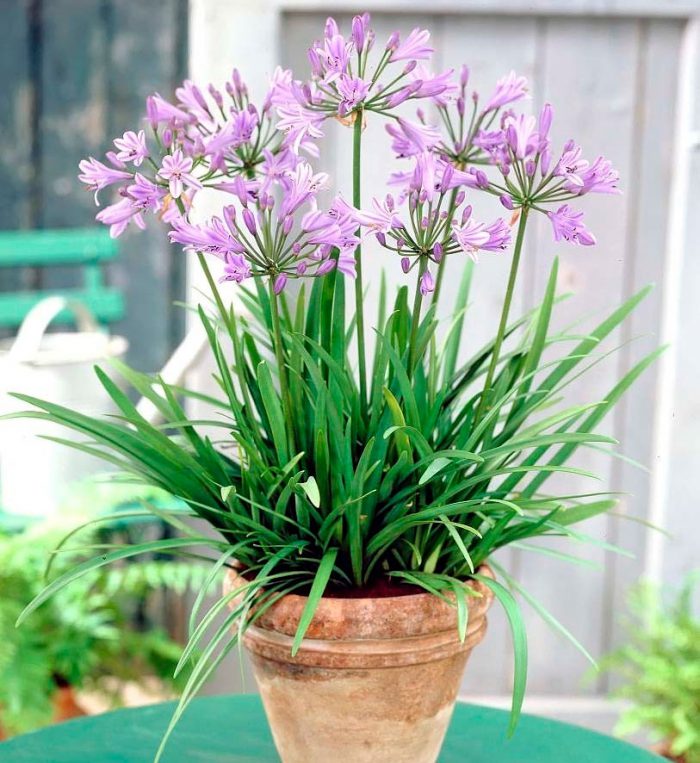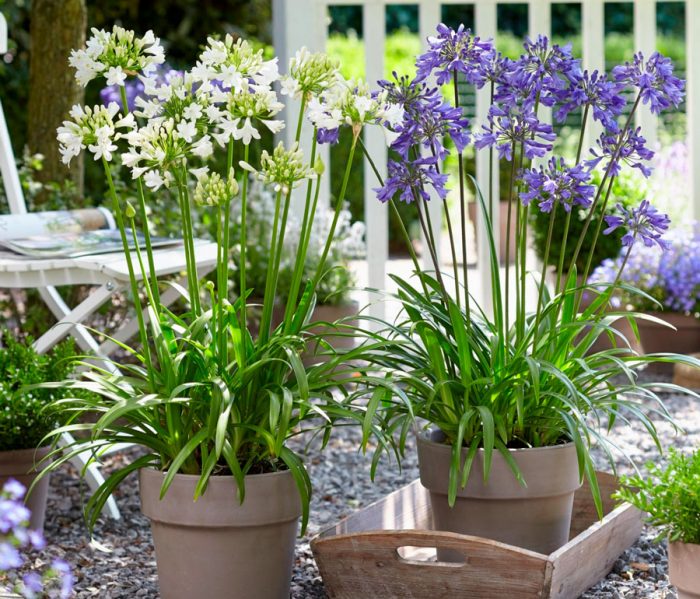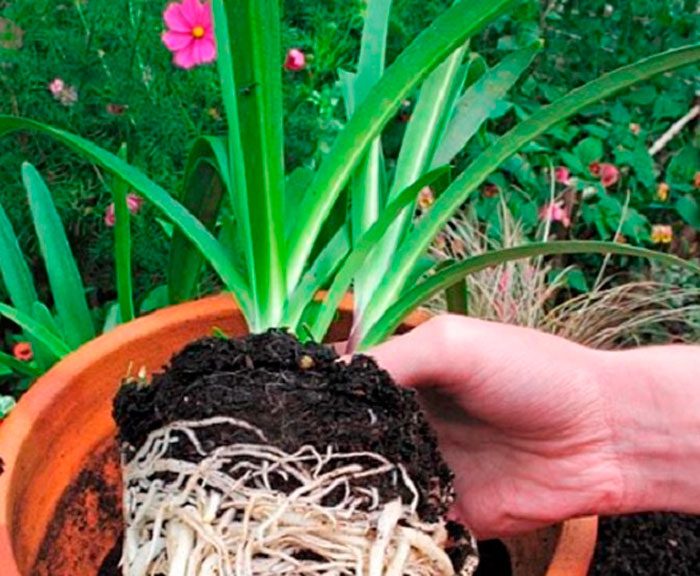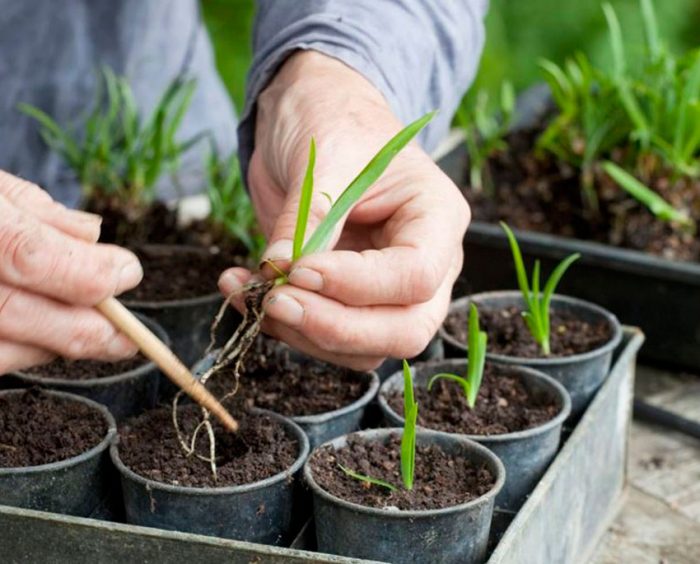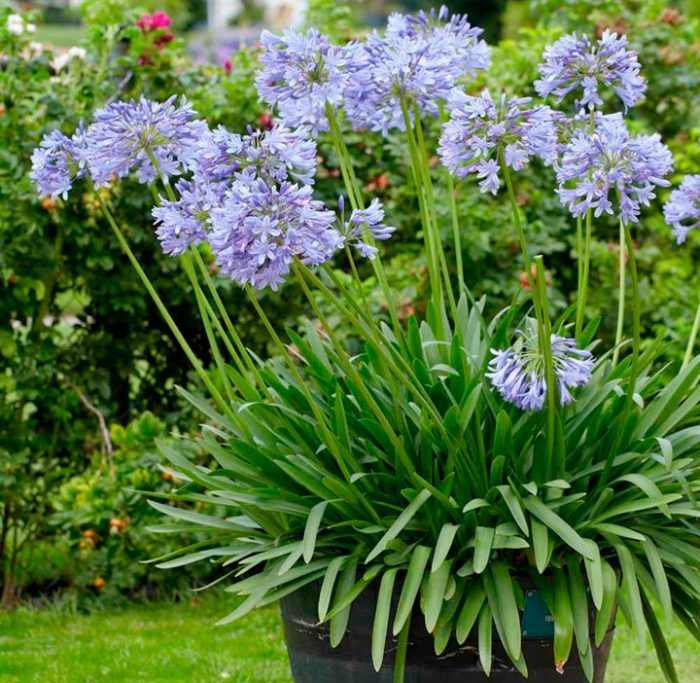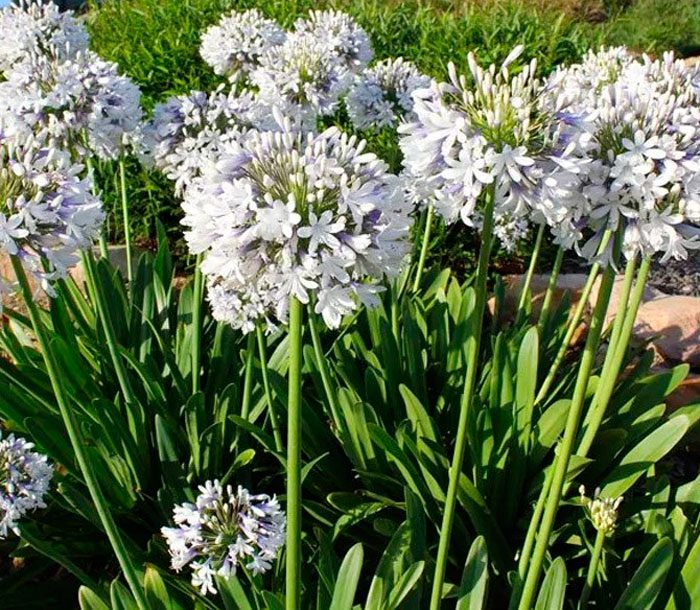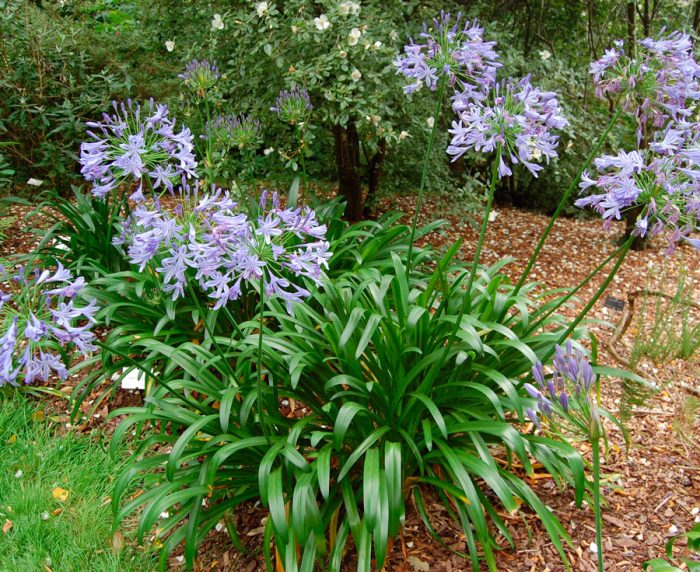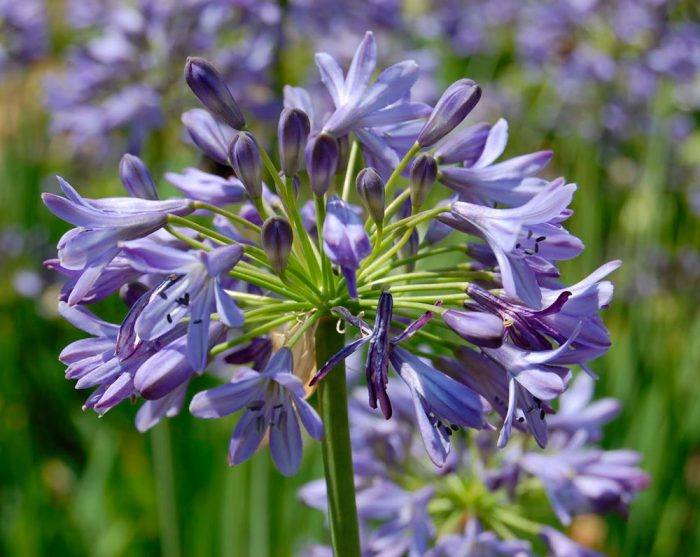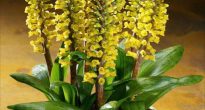According to data taken from various sources, the Agapanthus plant is part of the lily or onion family. This genus includes only five species, which are represented by herbaceous perennials. In the wild, this flower is found off the coast of South Africa on the dry slopes of the Cape.
Content
Agapanthus features
Agapanthus rhizome is short and creeping, while the fleshy roots are rather thick. The foliage collected in a root rosette is long and has a linear shape. During the flowering period, a powerful and relatively high peduncle is formed, which comes out of the leaf rosette. Its top is decorated with white, deep blue or blue-purple flowers. Umbrella inflorescences include funnel-shaped flowers. The flowering period can be up to eight weeks, as the flowers bloom alternately. On a properly developing adult bush, about 150 flowers can form.
In indoor conditions, the eastern agapanthus (Agapanthus umbellatus) is most often cultivated. The bush is decorated with ribbon-like grooved foliage, and during the flowering period, blue flowers appear on it. The peculiarity of agapanthus is that its different species can very easily interbreed with each other, forming various hybrids. In this regard, understanding what kind of agapanthus is in front of you can be quite problematic.
Brief description of cultivation
- Bloom... It blooms magnificently in the summer. The flowering period is about 8 weeks.
- Illumination... A bright light is needed.
- Temperature regime... In the spring and summer, the usual room temperature is, and in winter it is no warmer than 12 degrees.
- How to water... In the spring and summer, water is plentiful, and in the autumn-winter period - moderately.
- Air humidity... It grows normally at a humidity level typical for a living room.
- Fertilizer... Regularly, once every 10 days throughout the growing season, agapanthus is fed with organic matter and a mineral complex (alternating them).
- Dormant period... It starts in September and ends in February.
- Transfer... While the bush is young, it is subjected to such a procedure once a year, and the specimens are more mature - once every three or four years. This procedure is carried out in the spring months.
- Soil mixture... Humus and clay-sod soil, as well as sand and leafy soil (2: 2: 1: 1).
- Reproduction... By dividing the rhizome and by seed method.
- Pests... Spider mites and scale insects.
- Diseases... The decorativeness of the culture can suffer if it is not properly watered.
Agapanthus care at home
Illumination
For indoor agapanthus, choose a sunny place. If he does not have enough light, then the peduncle will grow very long and thin, and he will need additional support. The flower develops best on the windowsill of the south-west, south-east and south orientation.
Temperature
Experienced florists recommend keeping agapanthus in the garden or on the balcony in the spring-summer period, when it is warm outside. For the winter, the bush is transferred to a well-lit and cool (no warmer than 12 degrees) room.
How to water
In spring and summer, such a plant should be watered regularly and abundantly. With the beginning of September, a gradual reduction of watering is carried out, and in winter they are watered rarely and with a small amount of water, while preventing the earthen coma from drying out. Also, at any time of the year, make sure that the liquid does not stagnate in the roots of the plant.
Air humidity
This flower does not need additional spraying, because it grows and develops normally even at low air humidity.
Fertilizer
From the second half of spring to the middle of the autumn period, agapanthus should be systematically fed once every 1.5 weeks. To do this, use a complex mineral fertilizer and organic matter, and they should be alternated.
Agapanthus transplant
Small and young bushes are transplanted every year in the spring. And more mature plants are enough to replant 1 time in 3 or 4 years. When choosing a container, it should be borne in mind that agapanthus blooms magnificently only if the root system is cramped in the pot.
During transplantation, try not to injure the root system of the bush, otherwise it will hurt for a long time. For transplantation, a wide pot is chosen, at the bottom of which a drainage layer is necessarily made. To prepare a suitable soil mixture, clay-sod, leaf and humus soil, and also sand (2: 1: 2: 1) should be combined.
Reproduction methods
Growing from seeds
Sowing seeds is carried out in early spring. Take a small container and fill it with a medium of sand and leafy soil. Dip the seeds into it a little and moisten the crops from a spray bottle. Cover the bowl with a film from above and make sure that the soil mixture is constantly slightly damp. Air the crops regularly 2 times a day, for this, remove the shelter from the container for 30 minutes. After the emerging seedlings have formed 3 or 4 true leaf plates, they will need to be cut into small pots. In this case, three or four seedlings are planted in each pot.
Reproduction by division
During the spring transplant, the flower can be propagated by division if necessary. To do this, the plant removed from the pot is divided into several parts, which are planted in individual pots filled with moistened soil mixture.
Agapanthus diseases and pests
Agapanthus is resistant to diseases, but if it is watered untimely, this can lead to yellowing of the foliage. The same will happen if the bush feels an acute lack of moisture. Try to water the flower in a timely manner.
Of the pests, spider mites and scale insects most often settle on this culture.


Watch this video on YouTube
Types of agapanthus with a photo
Eastern agapanthus (Agapanthus orientalis)
This herbaceous evergreen comes from South Africa. The linear leaf plates are quite wide, curved and thick. In length, the peduncle can reach slightly more than half a meter.Flowering is observed in the second half of summer, while in one umbrella-shaped inflorescence there can be about 100 blue flowers.
Agapanthus umbellatus (Agapanthus umbellatus)
Either the Abyssinian beauty or the African lily (Agapanthus africanus). In nature, this plant is found in South Africa. The height of the bush can reach up to 0.7 m. Dark green smooth grooved leaf plates of a belt-like shape are collected in a root rosette. The plates taper towards the top. Umbellate inflorescences are formed at the top of a tall peduncle. They consist of many blue funnel-shaped flowers. Each flower has 6 petals fused at the base. The bush blooms in the first half of summer. And when it fades, after 40 days the seeds ripen completely.
Agapanthus campanulatus
This herb is deciduous. In nature, it can be found in the humid mountains in South Africa. The length of linear erect sheet plates is about 15 centimeters. Flowering is observed in the second half of the summer period. Blue bell-shaped flowers are formed on the bush.


Watch this video on YouTube

